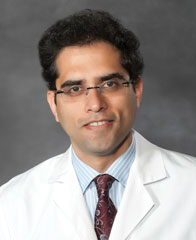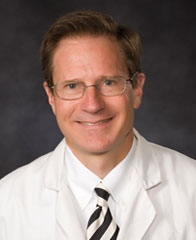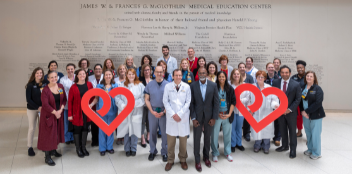Doctors at the Forefront
 Jay Koneru, M.D.
Jay Koneru, M.D.
 Richard Shepard, M.D.
Richard Shepard, M.D.
Pacemakers and defibrillators are lifesaving devices, but occasionally their leads—the wires that run between the battery and the electrodes attached to the heart—need to be replaced.
“Sometimes a patient will contract a bloodstream infection, and because these wires are in the heart, the infection cannot be treated or eradicated without taking them out because of the bacteria that colonize them,” said Jay Koneru, M.D. The infection can even spread to the valves, creating an emergency for the patient.
Other problems include broken leads, leads that are recalled by their manufacturer, and an excessive number of wires that occludes the blood vessels. The latter may happen when a young person receives a pacemaker, and leads are added over time, but none are removed.
Koneru and fellow Pauley Heart Center electrophysiologist Richard Shepard, M.D., are innovative in their approaches and use of a wide variety of tools, including lasers and femoral snares. The doctors often receive referrals from other electrophysiologists around the state for high risk cases.
“They’re incredibly experienced and skilled. They do complex lead cases that are done in very few medical centers,” said Chair of Cardiology Kenneth Ellenbogen, M.D.
Koneru undertook the first case in the world involving a patient who required filters to her carotid arteries and vertebral arteries during her lead extraction. The patient was born with a hole in her heart, and the infection was on the right side. “The infectious material started slipping from the right heart to the left via a hole in her heart and subsequently into her brain, causing strokes.” A neurosurgeon, John Reavey-Cantwell placed the filters in her arteries to protect the material from spreading, after which Koneru did the extraction. Several years later, the patient is still doing fine.
VCU was one of the first facilities to use an Angiovac, which is a vacuum pump placed inside the heart to remove infectious materials during lead extractions—which “can grow to the size of a ping pong ball.”
Since Koneru and Shepard work around the major blood vessels to the heart, they work in close conjunction with cardiac surgeons who are present in the operating room. “I think what really separates us is the planning that goes into the procedures, the team work, and our thinking outside the box to do innovative things—but safely.”
Back to Winter-2017

